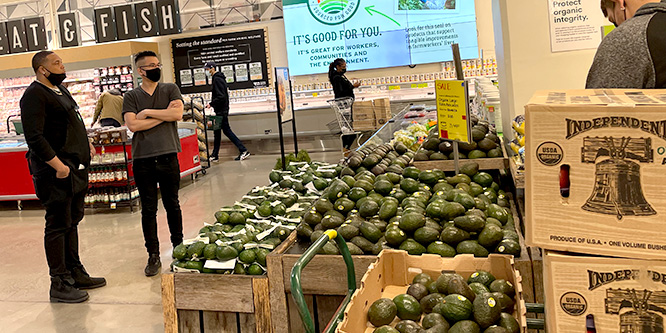
Photo: Getty Images/Portra
February 1, 2023
Is technology the answer to better customer experiences in grocery stores?
My grandfather, a supermarket operator in New Jersey, knew the best customers in each of his stores. He would routinely engage them in the aisles, chatting about their lives, their families and their needs. If one liked to make her own pickles, he’d have a bag of Kirby cucumbers waiting for free. He wanted to make sure that they would never have a reason to shop anywhere else.
I’ve always thought that if a technology company could capture that essence, to be a merchant in every sense of the word, they would have something truly unique to offer food retailers. A genie in a retail bottle.
At the recent FMI Midwinter conference in Orlando, the emphasis was on technologies that helped retailers enhance the customer experience. Even the more mechanical innovations like store automation have to be conducted under the lens of how they are going to help engage the shopper, the gathering was told. As Charlie McWeeney, vice president, technology, innovation, & strategy at Wakefern Food Corporation, noted, retailers need to “move repetitive tasks off the associates’ plate and then enable them to enhance the customer experience.”
Perhaps the industry needs to look at customer experience in a new way. Instead of replacing the merchant with technology, we should be augmenting store personnel with the right tools to properly engage the shopper when, where and how she will be most receptive. Empower store clerks with details on what makes a customer tick and the ability to reward them with incentives likely to produce the desired outcomes of loyalty and increased share of wallet.
“We talk about positively astonishing the customer, so it’s that first impression, that moment that you get them in a retail setting, that’s critical,” Randy Edeker, executive chairman of Hy-Vee, told me at the FMI event. He would have gotten along very well with my grandfather.
Discussion Questions
DISCUSSION QUESTIONS: What technology innovations can best help supermarket operators engage their customers? What skills training or other steps will make sure that associates who are freed up from repetitive tasks will engage in activities that improve the customers’ shopping experiences?
Poll
BrainTrust
Georganne Bender
Principal, KIZER & BENDER Speaking
Ken Morris
Managing Partner Cambridge Retail Advisors
Lisa Goller
B2B Content Strategist
Recent Discussions

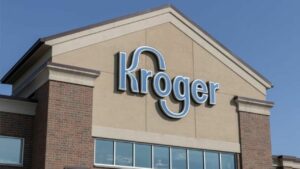
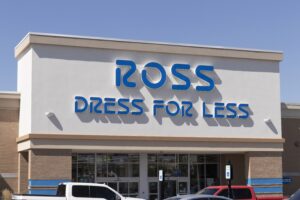

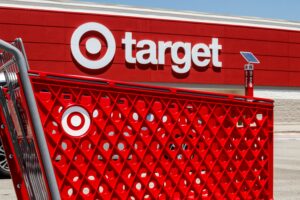
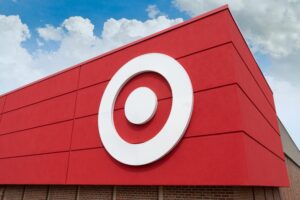

Let’s be frank here: technology is not a replacement for human interaction, which is something many highly value when shopping. However, technology can take care of more mundane, low value-added tasks which then frees up staff time to focus more on customers. For example, electronic shelf-edge tickets save the time of having to change prices, automation in picking and packing for online deliveries saves the time of having people in a back room shifting goods, and so forth. That’s where I see technology as playing the best role in the grocery store.
Technology, whatever that means, would be best served to help associates in whatever way possible. Let the customer enjoy one of the last bastions of great retail experience.
Self checkout is one of the most impactful automation points in the store, but it’s currently being misused by retailers as a way to reduce staff instead of improving the customer experience. The ideal checkout would leverage technology, not to shift more tasks onto the customer, but to enable proactive collaboration between staff and customer. Since the checkout is the last interaction a shopper has with the store, it needs to instill a positive memory, otherwise the shopper will be more inclined to try a competitor next time. People and technology are two parts that form one great customer experience.
Some people, like Ron’s grandfather, have an innate ability to care. What’s missing from grocery stores is the attention Ron’s grandfather gave in the aisles and the knowledge of product and people to engage in a meaningful customer interaction.
Technology, like CRM, has been around for years and upgrades to it along with newer technologies could provide grocery staff with the information they need to deliver the experience Ron’s grandfather so sincerely delivered. Ironically, grocery stores either need to hire more people or leverage technology like self-checkout lanes to free up people to help where they’re most impactful, the aisles. Those people need to possess or be trained in the soft skills necessary to sound sincere and demonstrate the knowledge necessary to solve the problems people go to the grocery to solve (like making pickles).
By the way, I’m a fan of self-checkout because I’m often in a hurry and don’t want to be stuck in line behind the person who is chit chatting with the cashier, but I’m often left wishing it was easier to find someone in the aisle to assist me.
Technology can be a powerful tool in building a better retail operation and creating better customer experience. And the term “augmenting store personnel” is exactly right: the technology is not a replacement for humans, it is a force multiplier for them.
Supermarkets may not require the same level of curated service or in-store entertainment as high-end fashion retail, but tech can be useful for real-time inventory, pre-scheduled replenishment, pick & pack pre-order for shelf stable goods, in-store chat-bots for wayfinding and customer service, etc. all of which can free up time for both shopper and store personnel to be spent on human-to-human interaction where it is most valuable — specifically in the areas that need human judgement and selection.
To state the obvious, it is much easier for an independent owner of one-to-a-few stores to know and engage customers than it is to know the good customers of five hundred stores. So technology should make it possible for the store manager of each of the five hundred stores to have the time to walk those aisles to review the shelves and engage the customer in that “retail moment.” Technology should remove those “repetitive tasks” from the store associates to enable them to direct or assist a customer in need (that’s usually me), or call for restocking “a hole” in a shelf. Technology should enable communications between associates so that they can assist a customer and thereby enhance the shopping experience. There are myriad ways to accomplish this and the required technology already exists.
Technology certainly plays a role in every retailer’s operation, but whenever an associate walks up to me, introduces him/herself and asks how he/she can help me, I love it. I’m all ears, and I’m typically willing to spend more depending on how detailed their knowledge is and how they’ve helped me make a decision. Can technology replicate this intimate interaction as Ron’s grandfather did? For online, we’re getting closer, but for in-store, not really. Associates with the desire to care and help can make a world of difference and keep me coming back for more.
I think it’s a combination of better tech and deeper commitment to staff development. Supermarkets need to address everything from omnichannel integration to data-driven decision making. They can’t afford to just pick one area to focus on, so they need to prioritize and then allocate budget and resources as best as they can.
For old-fashioned better customer service, product locator gets my vote. I’m constantly baffled by product placement. Is that in the ethnic food aisle or with the rest of the rice? I also believe that a replenishment model could work at the customer level. Simply stated, one that produces a suggested shopping list based on purchase history that can be picked and packed before you arrive to pick your produce, meat, and deli. Long story short, technology can help grocers better their customer experience, but only if they leverage technology in the right way.
Speaking as a consumer, what I want from a grocery store experience is simple: Good selection, fair prices, a clean and easy-to-shop sales floor, help when I need it, and plenty of cashiers so customers wait time on line is minimized.
Technology isn’t that important to me in a grocery store, and I don’t think I am alone when I say this. Now, tech that frees up associates to interact with shoppers? Bring it on.
Grocery tech focused on speed, convenience and personalization will engage shoppers and drive loyalty.
Cashierless checkouts and smart carts let shoppers skip the line. Smart shelves avoid out-of-stocks. Digital screens and QR codes promote product discovery and richer details. Beacons allow personalized communications like mobile coupons to grow sales.
Skills training will include in-store tech support and hospitality so consumers feel like cherished friends.
I’m glad this is the way the conversation around technology in stores is evolving, as technology just isn’t a replacement for human interaction. One of the least personal, most common ways I typically interact with associates is to ask where an item is that I’m looking for. That interaction could easily shift to apps/websites with a simple aisle navigation tool. Many stores offer that function, and in grocery, it’s especially useful.
I really like the way the article talks about empowering people versus replacing people. Genie in a bottle, indeed!
Customer experience is the sum total of a number of factors. I believe the most important one is the human interaction between the employees and the customers. Any technology that can be done to support these interactions enhances the customer experience. I am not sure that there is any one technology that will work best for all grocery retailers.
The competitive grocery landscape has proven that the winners, such as Kroger, Walmart, and Target, have invested significantly in technological capabilities to improve the grocery customer experience. This includes a heavy dose of enterprise data strategies, supply chain automation, robotics, dynamic pricing via electronic shelf labels, micro fulfillment capabilities, enhanced checkout experiences, eCommerce offerings, and perpetual inventory to allow customers and associates visibility to real-time availabilities.
However, the grocery customer experience requires blending the arts and sciences. Technology enables growth and cost efficiency and provides insights into products and customers to drive personalized experiences. The human element matters, as automation and other capabilities are now freeing up store associates to provide more value-added services.
There is plenty of friction-filled experiences at the checkout that needs to be addressed. In addition, the grocery store’s prepared, and premium food side and added-on services are where the margin differentiators are.
Technology needs to be more innovative, and not just to move existing workarounds or better scheduling. Take self-check out — it didn’t really improve speed of check out (in fact it probably slowed it down) — just shifted the work burden from expensive cashiers onto customers. Now, imagine sending groceries down a lane equipped with reliable working image recognition, where the products move to bagging at the same speed luggage moves along conveyor belts. Almost feasible, and technology like that changes the equation, not just moves the workaround. So smarter technology will indeed improve customer experience.
Any customer in a retail store wants top priority to be able to get what they went in for, therefore exceptional inventory management has to be top of every retailer’s list. A really great supply chain optimisation solution that also helps store staff replenish shelves efficient also helps to relieve staff of mundane time consuming tasks enabling them to focus on that customer experience. Use technology to create time and the train the staff really well in engaging with the consumer, don’t expect technology to provide that engagement.
Is grocery such a monolith that we can really generalize? For example, the store that I patronize the most, one of three or four, which I would describe as being between an independent and a regional chain in size (the name will be omitted to protect the guilty!) has a remarkably inept website … even simple searches seemed to be beyond its capabilities. Not surprisingly, perhaps, they have the traditional instore issues (like out-of-stocks) as well but still, improving the website is something I would recommend … highly. But other stores do a good job on that front.
In general, I think food is one of our better run sectors, but I endorse the principal that Ron advocates: stop fixating on techno-wonders and work on improving what’s there already.
Is technology the answer to better customer experiences in grocery stores? The short answer is no. Consider the history of “innovations” that have come and gone (beacons to deliver coupons to a shopper’s smartphone), innovations that never caught on (electronic shelf-edge price tags and roaming robots like Marty), innovations that continue to annoy more shopper than they please (self-checkout terminals), and others. The answer to better customer experiences in grocery stories is to focus on the fundamentals: outstanding customer service, quality perishables and good prices.
Grocery team members want to help customers, share their knowledge and insights. But they are often up against the clock with unforeseen realities thanks to late deliveries, product shorting, a fellow team member who called in sick, or a pile of to-do’s from the previous day.
Technology must help them in the back of the house — smoothing supply chain issues, vendor coordination, merchandising planning, while also giving them a leg up on the store floor creating stronger customer relationships — by helping customers save time, find favorite products, answer comparison questions, request new products, and personalization to be identified as a regular, not just another shopper.
Disclaimer: I work for Microsoft.
Technology has been a deflationary force since the start of the industrial revolution.
Customers are demanding improved overall customer experience yet at the same time the cost of providing that through more people is increasing.
Technology can have a major impact on customer experience — not only streamlining supply chains to ensure product availability, but also to help front line workers maximise their focus and overall efficiency.
Earlier this week I saw an amazing example of this from a Microsoft partner using Microsoft Teams for Frontline Workers and specifically Adaptive Cards. Adaptive Cars are similar to an Uber fare in that they are sent out to as tasks colleagues with the relevant skillset with the first to accept the task taking ownership. They have established 19 different cards — each one representing a different in-store micro-process, all of which aim improve customer experience. These include tasks like highlighting required clean-ups, allowing customers to scan QR codes to attain product help, highlighting a required shelf-replenishment and even allowing customers to scan QR codes for security restricted products with the store colleague meeting the customer at the POS with the item.
With imagination technology can have a huge impact — although often a major barrier can be the infrastructure costs of hand-held devices and that is before the change management requirement is considered. Something that cannot be underestimated.